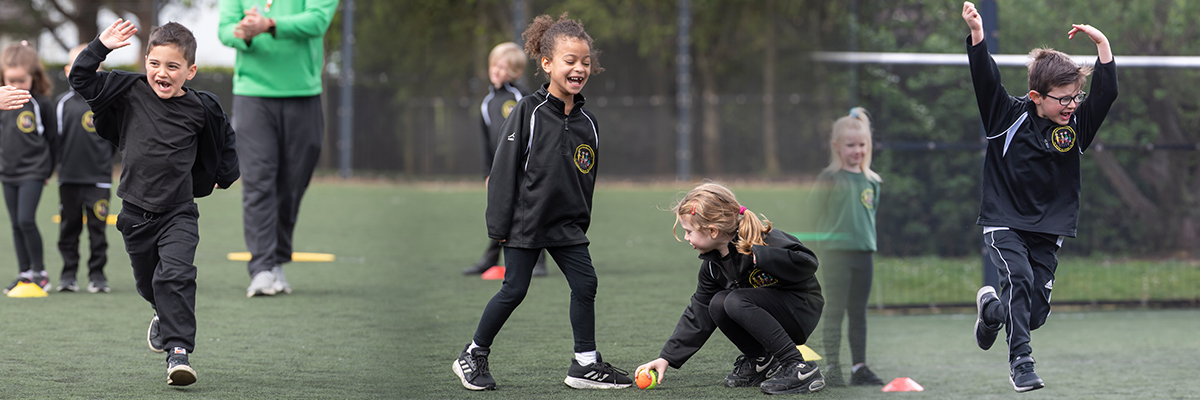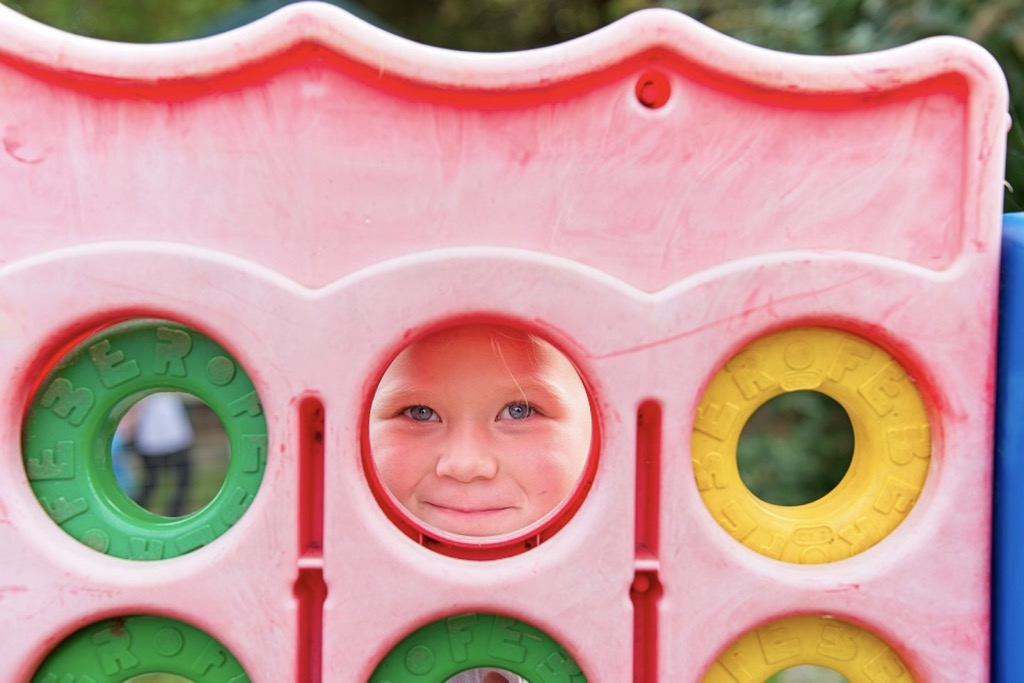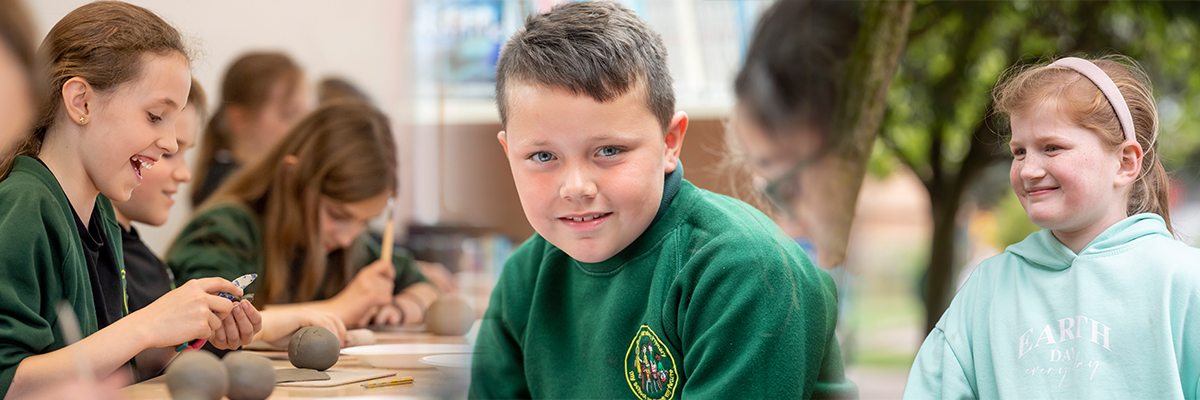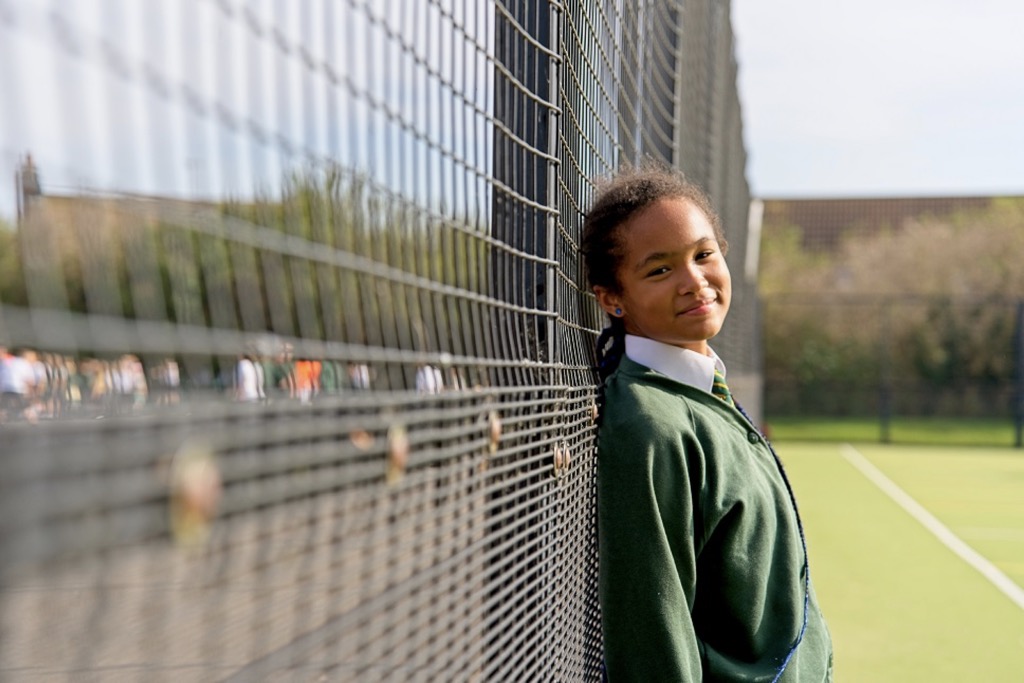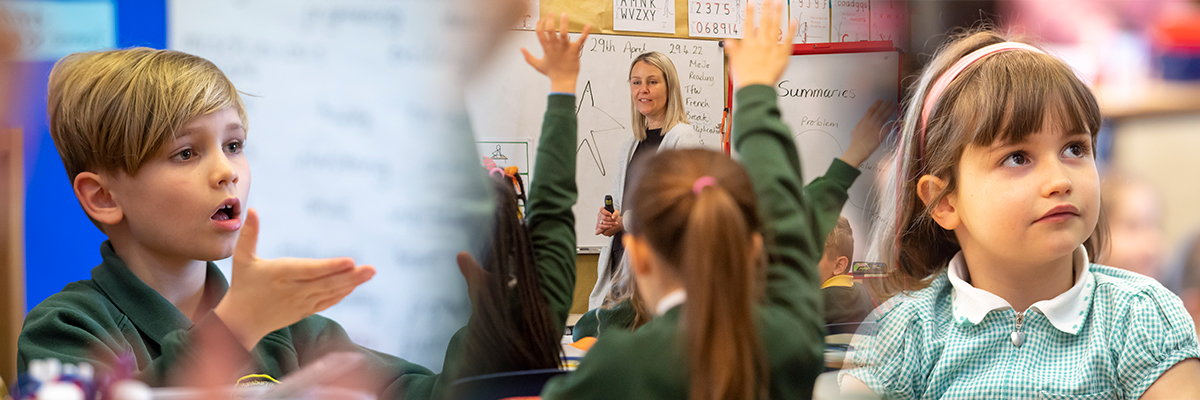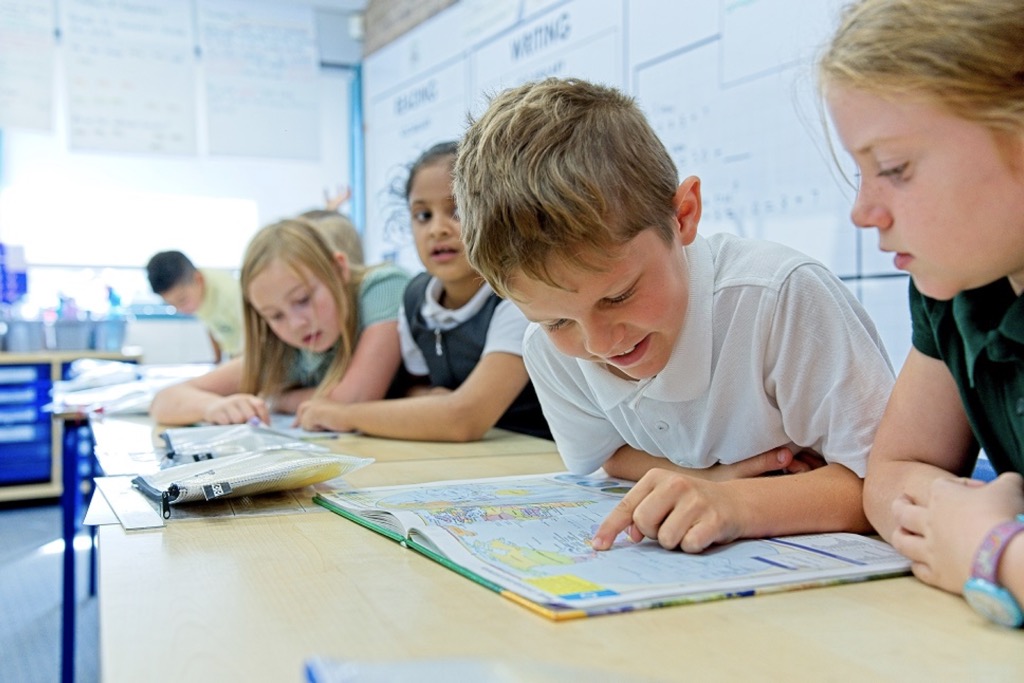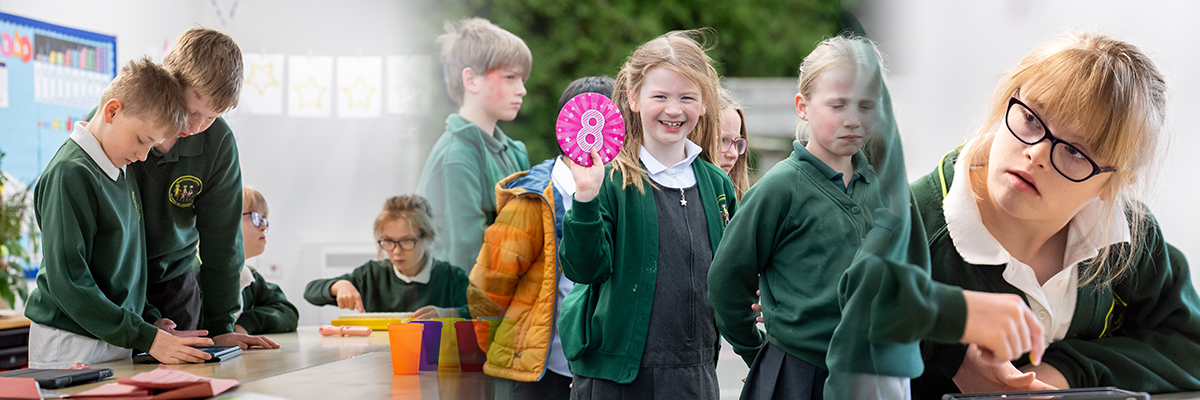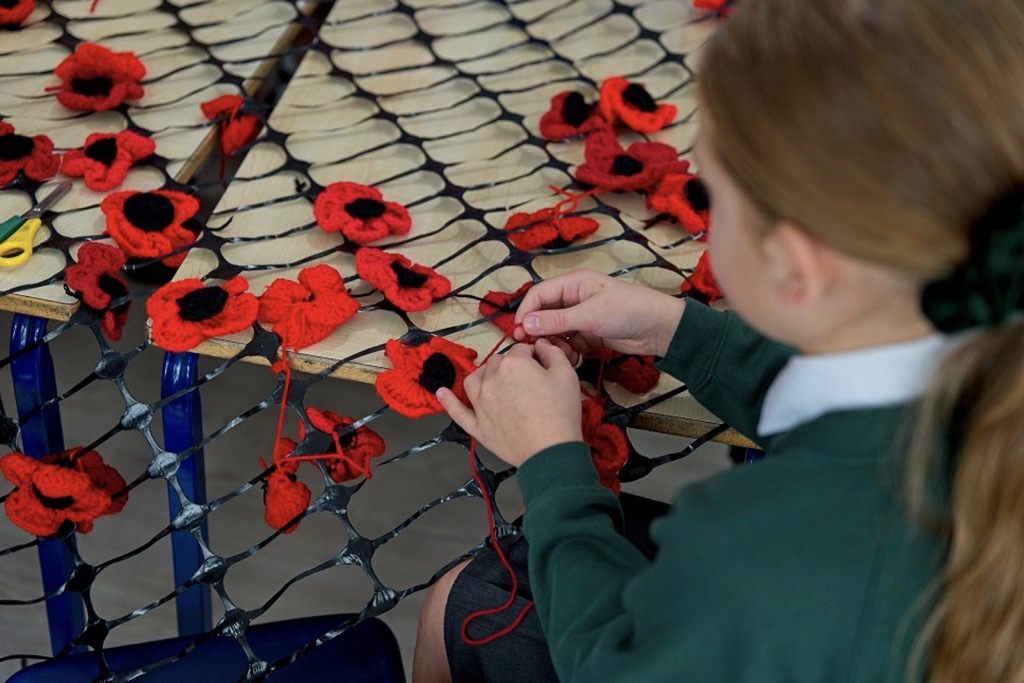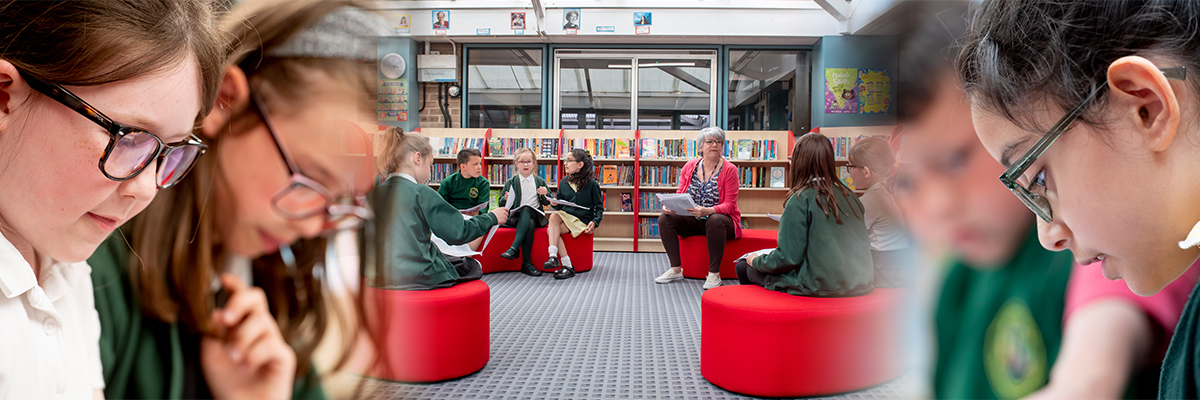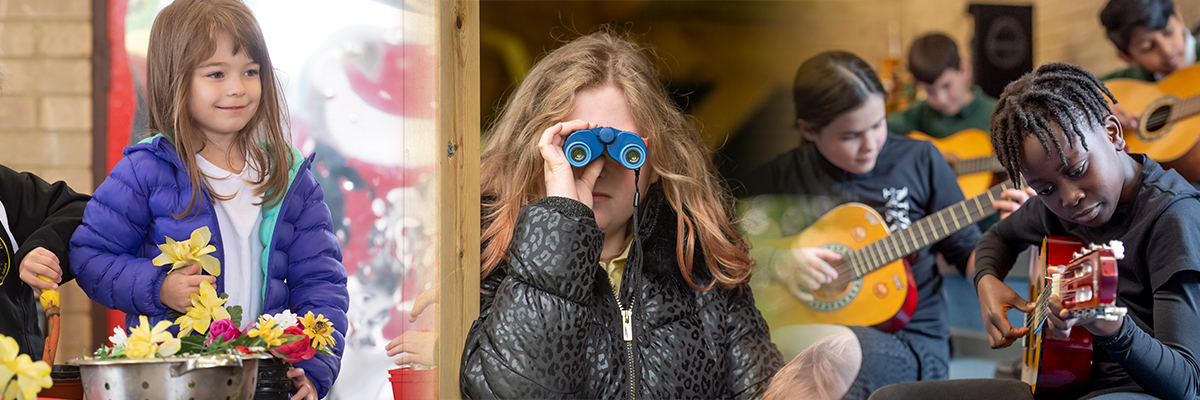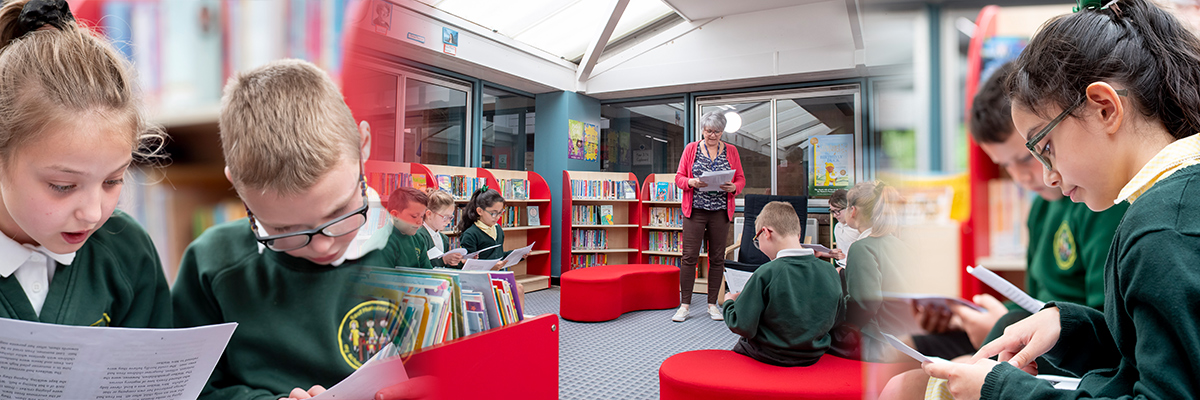Our Curriculum : Computing
We intend for our Computing Curriculum to be aspirational, enabling and inclusive, as well as ambitious and innovative.
We intend for our computing curriculum at East Hunsbury Primary School to:
- Empower children to gain and develop the knowledge, skills, understanding and confidence that will equip them for an ever-changing and evolving digital world.
- Ensure every child develops a long-term understanding of computing in order for them to be able to use technology responsibly, effectively and safely.
- Develop responsible and confident digital citizens who play an active, safe part in the digital world and who leave our primary phase equipped with an armoury of transferrable digital skills.
- Teach pupils how to use computational thinking to think critically, including know how to use algorithms, debug, ask questions and find patterns.
- Provide our children with the necessary tools to gain access to all levels of employment and professions of the future.
We intend for our computing curriculum to teach children the knowledge and skills of how to stay safe online and in the future.
We have developed our computing curriculum alongside the expertise of the Denbigh School Computing Hub; consequently, computing at East Hunsbury Primary School is taught through the Teach Computing Curriculum, which is aligned to match the scope and ambition of the National Curriculum. At East Hunsbury Primary School, we adapt the curriculum to ensure that it meets the needs of our learners and our community.
The computing curriculum is sequenced coherently to ensure that substantive and disciplinary knowledge builds through six distinct strands which are:
1. Creating Media - A
2. Programming - A
3. Computing Systems and Networks
4. Data and Information
5. Creating Media - B
6. Programming - B
Online behaviours underpin all these strands.
Our core computing curriculum covers 10 main areas of study:
1. Networks
2. Creating Media
3. Data and Information
4. Design and Development
5. Computing Systems
6. Impact of Technology
7. Algorithms
8. Programming
9. Effective Use of tools
10. Safety & Security
Pupils are taught computing each half term, which alternates between unit specific teaching and embedding key learning. It is taught through whole-class interactive teaching with pupils challenged and scaffolded, as appropriate, when working on a given computing concept, principle or content.
Online behaviours and E-Safety are specifically taught and addressed monthly through Project Evolve, which resources each of the 330 statements from the UK Council for Internet Safety’s Framework (UKCIS): ‘Education for a Connected World.” The following areas are covered through this framework:
1. Self-Image and Identity
2. Online Relationships
3. Online Reputation
4. Online Bullying
5. Managing Online Information
6. Health, Wellbeing and Lifestyle
7. Privacy and Security
8. Copyright and Ownership
The curriculum is further supported by National Online Safety lessons, and these are taught discretely as part of initiatives such as Safer Internet Day. We are a National Online Safety Certified School. About Us | National Online Safety.
We measure the impact of the computing curriculum primarily through the pupils’ work to show evidence and impact of learning. Other methods of assessment we use to evaluate the impact of our curriculum on our intended learning outcomes are:
• Retrieval quizzes
• Pupil voice
• Staff surveys
• Learning walks
• Summative assessments
These are assessed by the teacher to ascertain whether the learner has met the intended outcomes of the unit through learning objective statements from each lesson. This is recorded on a grid and stored centrally to allow the current and next teacher to focus on the level.
Pupil attainment in computing will also be recorded on Insight annually at the end of the summer term.
Children engage in alternate terms of discrete computing units (where lessons are taught for 1 hour each week following the Teach Computing Planning), followed by embedded units (where computing is taught for approximately 2 hours a term following the NPAT planning, with links made to other subject areas).
|
Computing |
Term 1
|
Term 2 |
Term 3 |
Term 4 |
Term 5 |
Term 6 |
|
Year 1
|
Embedded unit: Data and Information: Grouping Data e.g., link to Science (identifying and naming common animals) |
Computer Systems and Networks: Technology Around Us |
Embedded unit Creating Media: Digital Writing e.g., link to History (Edith Cavell and Mary Seacole)
|
Programming A: Moving a Robot (Beebots) |
Embedded unit Creating Media: Digital Painting e.g., link to Art (link to Art, Sculpture and shoe making) |
Programming B: Introduction to Animation (Scratch Jr) |
|
Year 2 |
Embedded unit Creating Media: Digital Photography e.g., link to Art (drawing Inspired by architecture)
|
Computer Systems and Networks: IT Around Us
|
Embedded unit Creating Media: Making Music e.g., link to History (music for Christopher Columbus or Neil Armstrong journeys)
|
Programming A: Robot Algorithms (Beebots) |
Embedded unit: Data and Information: Pictograms
|
Programming B: An introduction to Quizzes (Scratch Jr)
|
|
Year 3 |
Embedded unit Basic skills/word processing. e.g., link to wider curriculum or English. |
Computer Systems and Networks: Connecting Computers
|
Embedded unit Creating Media: Animation e.g., link to History (the Romans) |
Programming A: Sequence in Music (Scratch)
|
Embedded unit: Creating Media: Desktop Publishing
e.g., link to Science (parts of a plant) |
Programming B: Events and Actions Scratch |
|
Year 4 |
Embedded unit Creating Media: Photo Editing e.g., link to History (Vikings) |
Computer Systems and Networks: The Internet
This is not a Teach Computing unit. It is a 5 lesson unit which is held in the NPAT Planning team.
|
Embedded unit Creating Media: Audio Editing
|
Programming A: Repetition in shapes (Logo) |
Embedded unit Data and Information: Branching Databases e.g., link to Science (classifications and keys) |
Programming B: Repetition in Games (Scratch)
|
|
Year 5 |
Embedded unit Creating Media: 3D Modelling
|
Computer Systems and Networks: Sharing information |
Embedded unit Data and Information: Flat file databases e.g., link to History (WW1) |
Programming A: Selection in Physical Computing (Crumbles) Replace with Micro:bits see suggestions below. |
Embedded unit Creating Media: Vector Drawing e.g., link to History
|
Programming B: Selection in Quizzes (Scratch) |
|
Year 6 |
Embedded unit Creating Media: Video Editing e.g., link to RE or link to Art |
Computer Systems and Networks: Communication
|
Embedded unit Creating Media: Web Page Design
|
Programming A: Variables in Games (Scratch)
|
Embedded unit Programming B: Sensing (Micro:bits)
|
Data and Information: Spreadsheet
e.g., link to End of Term party/event/summer fayre |
The Teach Computing units for Key Stages 1 and 2 are based on a spiral curriculum. Each of the themes is revisited regularly (at least once in each year group), and units consolidate and build on prior learning within that theme. This style of curriculum design reduces the amount of knowledge lost through forgetting, as themes are revisited yearly. It also ensures that connections are made across consecutive years. The spiral curriculum will support children to be competent, confident, and creative users of technology and responsible digital citizens.
Pupil attainment in computing will also be recorded on Insight annually at the end of the summer term.
The teaching of computing and online behaviours begins in the Early Years and are taught through:
Personal, social and emotional development- Show resilience and perseverance in the face of challenges.
- Know and talk about different factors that support their health and wellbeing.
- Sensible amounts of screen time.
Physical Development
- Develop their small motor skills so they can use a range of tools competently, safely and confidently.
Expressive Arts and Design
- Safely use and explore a variety of materials, tools and techniques, experimenting with colour, design, form and function.
The teaching of computing builds on from the Early Years into Year 1 and through Key Stage 1 and Key Stage 2 through Creative Media and Technology around us. Our computing curriculum is sequenced to ensure that the pupils’ knowledge and understanding of computing, technology and e-safety builds sequentially over time and enables pupils to become responsible digital citizens who play an active but safe part in the digital world.
Building on from the Early Years, children in Key Stage 1 will begin to understand what a computer is and how its constituent parts function together; how networks can be used and understand the risks associated with these; what an algorithm is and begin to write short algorithms; how to use computers to create digital media and to recognise a wider range of technology and its uses. This knowledge and understanding is further developed in Key Stage 2 as the children increase their understanding of computer networks; use a wider range of digital devices to design and create programs, including collecting, analysing and presenting data; design, write and debug problems that accomplish a specific goal; create more complex digital documents, drawings and models and explore how data and information is transferred and shared online. Pupils will also be taught more in-depth knowledge and skills for staying safe online in our constantly evolving digital world.
Enrichment events are key to our computing curriculum, providing pupils with discrete time to focus and deepen their learning. They provide opportunities for new experiences as well as nurturing and developing a thirst for learning. Wherever possible, the computing curriculum is enhanced using cross-curricular links through other subjects. Children will have a secure understanding of how computing and technology fits into and supports modern society. For example, in science, children create and use branching databases and in art, children create a piece of art in the style of an artist they have been studying. Digital Leaders also provide clubs for younger year groups to engage more children within the subject and broaden their experience of Computing.
Democracy - In computing, we are learning to understand and be considerate to the views of other internet users. We understand that we are each part of the democracy of the internet and that we can each, in our own small way, affect the way the internet exists.
The Rule of Law - In computing, we understand the use of rules on computers and the internet, such as when we are allowed to use social media and what we are allowed to post and share. We understand that rules are to keep others and ourselves safe and to help the internet to be an enjoyable and engaging place.
Individual Liberty - In computing, we understand how to use our right to freedom of speech in a respectable and thoughtful way, being considerate of how this speech will affect others. We understand the freedom that the internet and computers offer us in discovering information and connecting us with the world.
Mutual Respect - In computing, we appreciate and understand the views of others, our right to challenge, question and discuss opinions and views, and to do this in a respectable and thoughtful way. We understand that as we are connected with the world when accessing the internet, we are exposed to the widest range of views, and we are learning to respect them.
Tolerance of those of different faiths and beliefs - In computing, we understand that we are connected to people across the whole world. We understand that these are people from different communities, cultures, faiths and beliefs. We use the opportunities offered in computing to question, challenge and understand people with these different characteristics to support and develop our tolerance of them.
We aim to provide all our pupils with the opportunity to succeed and to reach the highest level of personal achievement. To do this, teaching and learning within the computing curriculum will:
● Provide equality of access for all pupils and prepare them for life in a diverse society.
● Use materials that reflect a range of cultural backgrounds, without stereotyping.
● Use materials to promote a positive image of and attitude towards disability and disabled people.
● Promote attitudes and values that will challenge discriminatory behaviour.
Our curriculum is inclusive by design to ensure that everyone has what they need to succeed within the computing curriculum. Children access Teach Computing activities which develop Computational skills without the need for any computing equipment and support can be given through creating widgets which give instructions in a pictorial form. Teaching strategies such as ‘Manager and Driver’ give children the option to support each other in a structured way providing each child with equivalent opportunities within the subject.
We further our learning through linking with the wider curriculum teams. The Careers and Aspirations team supports children to learn about how computing is used in a range of jobs through visits from people who share information about their jobs and the role that computing plays in different careers and through regular career items in our newsletter. Additionally, the Enrichment team offers a range of extracurricular clubs which enable children to participate in computing such as Minecraft and Beebot club.


